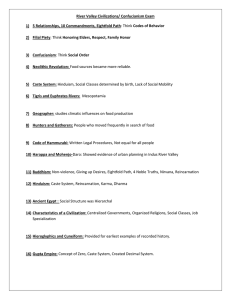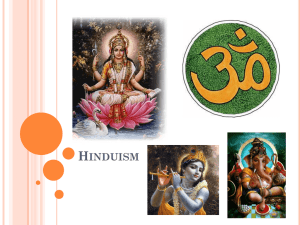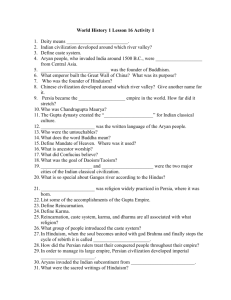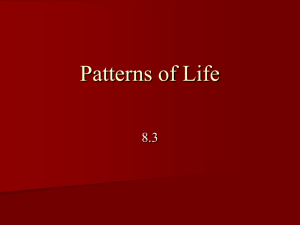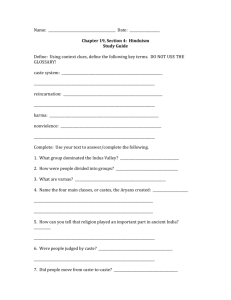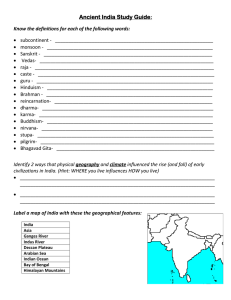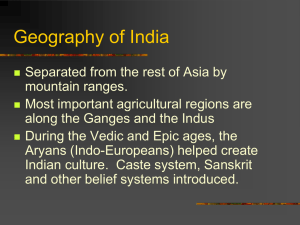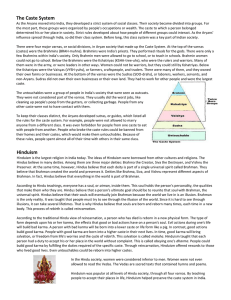Ancient India Notes
advertisement
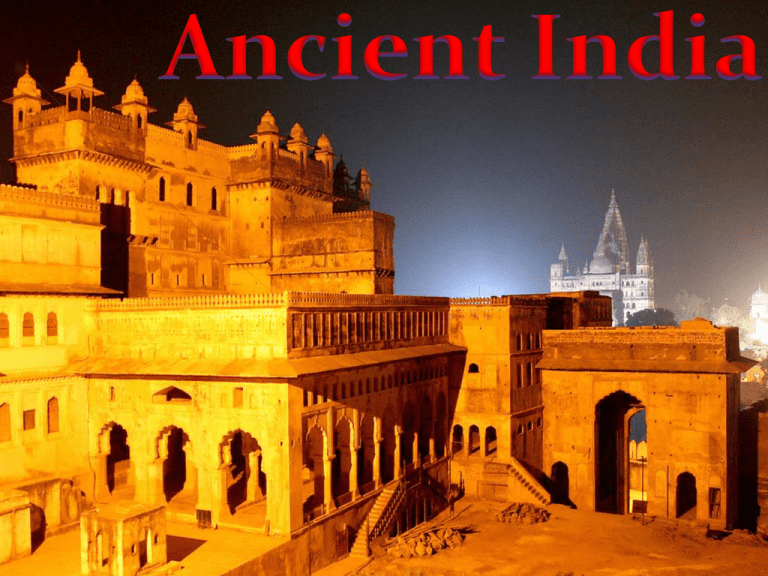
TEMPLES • Magnificent temples—both Hindu and Buddhist—were built all around India. They remain some of the most beautiful buildings in the world today • Gupta temples were topped by huge towers and were covered with carvings of the god worshipped inside • Buddhist temples are also impressive. Some temples were carved out of mountainsides METAL WORKINGS • Indians were pioneers of metallurgy – the science of working with metals • Their knowledge helped them to create high-quality tools and weapons • Metalworkers made their strongest products out of IRON; Indian iron was very hard and pure and became a valuable trade item MATH • • Gupta scholars were among the most advanced mathematicians of their time They developed the number system we use today, called Hindu-Arabic numerals • Indians were the first people to create the zero OTHER SCIENCES • Indians used inoculations to help protect against diseases (the practice of injecting a small dose of a virus to help a person build a defense to the disease) • Indian doctors performed surgeries to repair broken bones, treat wounds, remove infected tonsils, and even reattach torn earlobes • Indians were also interested in astronomy– their astronomers knew of 7 of the 8 planets in our solar system • They knew the sun was a star and that the planets revolved around it • They also knew the earth was ROUND and spun on its axis • As Aryan society became more complex, their society became divided into Varnas (social groups) -- These groups were largely organized by people’s occupations • Rules of interaction between these varnas became stricter, so each level became more complex. Ultimately, the system was called the Caste System: The division of Indian society into groups based on birth, wealth, or occupation • • 1. Brahmins (priests) were seen as the highest varna 2. Kshatriyas Rulers and Warriors 3. Vaisyas Farmers, Craftspeople, and Traders 4. Sudras - Workers and Servants There is a FIFTH group – those that do not belong to any of these castes are called Dalits, or untouchables, because no one is to have any contact with them The caste system was formally abolished by the Indian Constitution in 1950, but still it shapes the lives in India. The caste system is more prominent in the rural areas than in the cities • Hinduism forms out of a blending of the religion of the Aryans (Brahmanism) and religious ideas introduced by other cultures THE BASICS • • • • • World’s third largest religion Polytheistic – Their three main gods are Brahma (the creator), Siva (the destroyer) and Vishnu (the preserver) Unlike other religions, Hinduism is a way of life, a Dharma, that is, the laws and duties one must perform in his/her lifetime Hindus believe everyone's ultimate goal is to reunite their soul with Brahman, the universal spirit They achieve this thru several lifetimes, made possible by Reincarnation, or the process of rebirth into a new physical form HINDUISM & THE CASTE SYSTEM • The type of form a person inherits after reincarnation depends on his/her Karma, the effects that good/bad actions have on your soul • BAD Karma = re-born into a lower Caste; GOOD Karma = higher Caste • In time good Karma brings salvation, which is freedom from life’s worries and the cycle of rebirth – Moksha • In a nutshell – Hinduism taught people to accept their place and helped to preserve the Caste System in India
